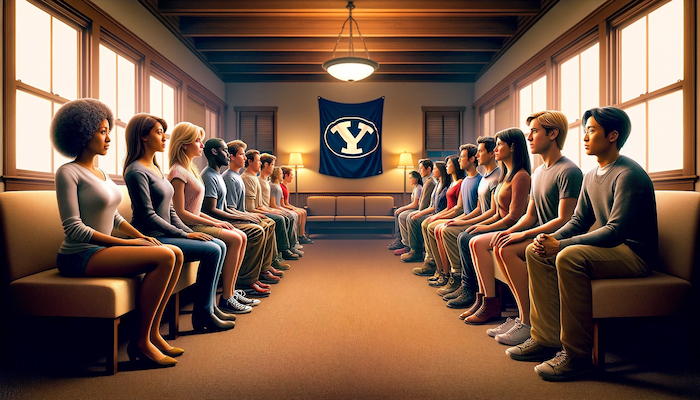There is an old wive’s tale about students who attended BYU or BYU Idaho holding what is now referred to as a “Mormon gazing party.” The story exists in different varieties but the core details suggest that a “Mormon gazing party” would hypothetically go as follows:
1. Members of opposing sexes form two distinct lines aligned to face each other.
2. The lights are to be turned off to allow both parties time to undress and become completely nude.
3. Once undressed, the lights are to be turned on again but only for a short amount of time.
4. With the lights now turned on, members of the opposite sex would then “gaze” at each other until the lights are turned off.
5. With the lights now off and the gazing complete, everyone would then get dressed again.
An important characteristic of the folklore is that whatever time allotted for the lights to be on is strictly to be for viewing purposes only. Participants implicitly or explicitly understand that they are not to leave the line, but are supposed to, or allowed to, view the nude participants on the opposing side of the line only.
Some important clarifying details about “Mormon Gazing Parties”
- The term “Mormon Gazing Party” is not a term that most Latter-Day Saints would be familiar with. The term does not show up in any historical documentation considered to be cannon or important to the church. In other words, it’s certainly not a term that was coined by anyone representing the church. The origin of the name is unknown.
- The term “Mormon Gazing Party” might suggest that such an event, under certain circumstances, is a church sponsored or sactioned ceremoy. On the contrary, such an event as described above would take place outside, or beyond the recommendation of any church protocol or clergy approval.
- While its possible “Mormon gazing parties” have happened. Their occurrence is not a well-documented phenomenon.
- The term was likely derived as a utilitarian description of a cultural phenomenon from someone outside of the church.
Related: What is “Mormon Soaking?” Defined and Explained by a Mormon
